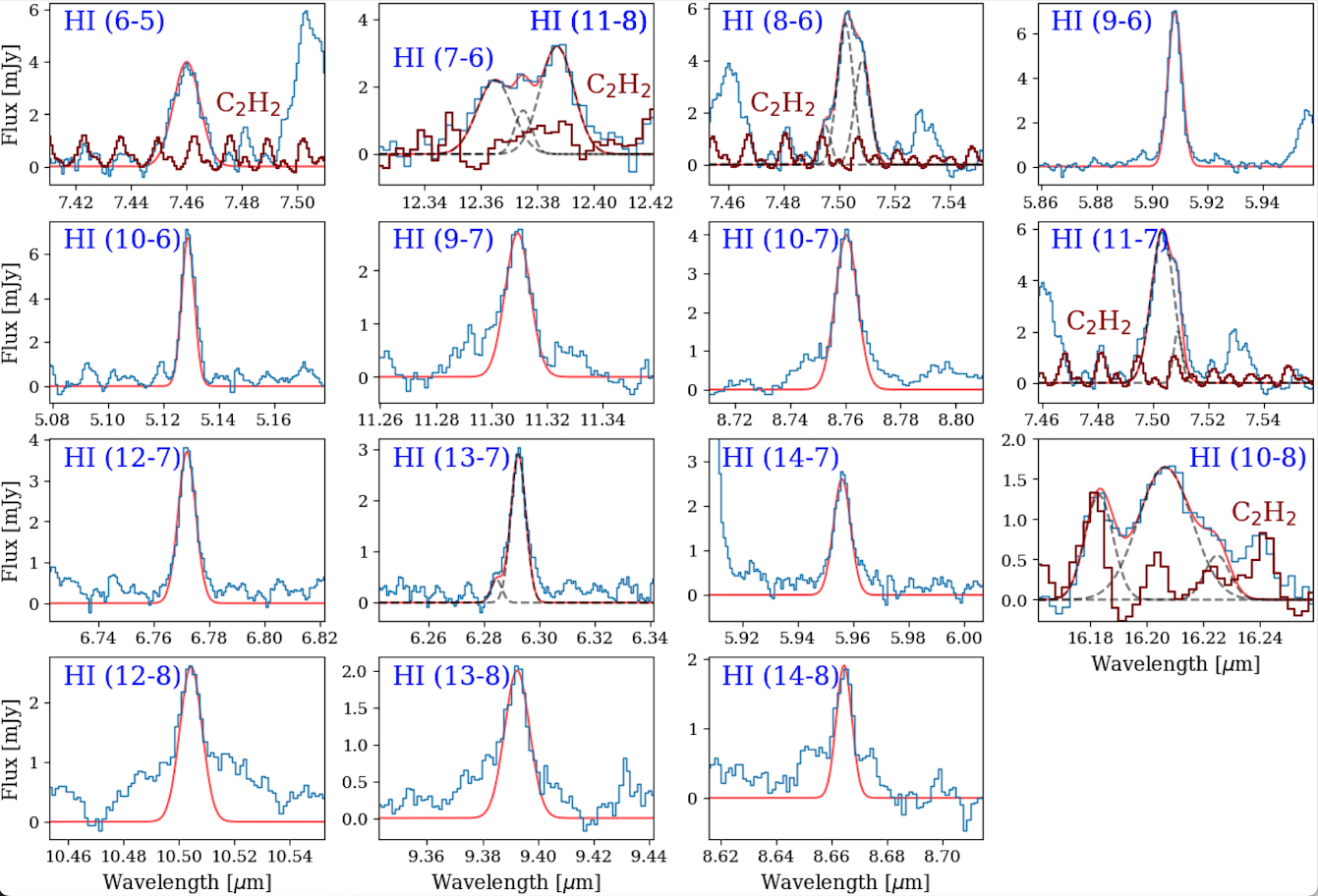Understanding the physical conditions of circumstellar material around young stars is crucial to star and planet formation studies. In particular, very low-mass stars (M★ < 0.2 M⊙) are interesting sources to characterize as they are known to host a diverse population of rocky planets. Molecular and atomic hydrogen lines can probe the properties of the circumstellar gas.

This work aims to measure the mass accretion rate, the accretion luminosity, and more generally the physical conditions of the warm emitting gas in the inner disk of the very low-mass star 2MASS-J16053215-1933159. We investigate the source mid-infrared spectrum for atomic and molecular hydrogen line emission.
We present the full James Webb Space Telescope (JWST) Mid-InfraRed Instrument (MIRI) Medium Resolution Spectrometer (MRS) spectrum of the protoplanetary disk around the very low-mass star 2MASS-J16053215-1933159 from the MINDS GTO program, previously shown to be abundant in hydrocarbon molecules. We analyzed the atomic and molecular hydrogen lines in this source by fitting one or multiple Gaussian profiles. We then built a rotational diagram for the H2 lines to constrain the rotational temperature and column density of the gas. Finally, we compared the observed atomic line fluxes to predictions from two standard emission models.
We identify five molecular hydrogen pure rotational lines and 16 atomic hydrogen recombination lines in the 5–20 µm spectral range. The spectrum indicates optically thin emission for both species. We use the molecular hydrogen lines to constrain the mass and temperature of the warm emitting gas. We derive a total gas mass of only 2.3 × 10−5 MJup and a temperature of 635 K for the warm H2 gas component located in the very inner disk (r < 0.033 au), which only accounts for a small fraction of the upper limit for the disk mass from continuum observations (0.2 MJup). The HI (7−6) recombination line is used to measure the mass accretion rate (4.0 × 10−10 M⊙ yr−1) and luminosity (3.1 × 10−3 L⊙) onto the central source. This line falls close to the HI (11−8) line, however at the spectral resolution of JWST MIRI we managed to measure both separately. Previous studies based on Spitzer have measured the combined flux of both lines to measure accretion rates. HI recombination lines can also be used to derive the physical properties of the gas using atomic recombination models. The model predictions of the atomic line relative intensities constrain the atomic hydrogen density to about 109−1010 cm−3 and temperatures up to 5000 K.
The JWST-MIRI MRS observations for the very low-mass star 2MASS-J16053215-1933159 reveal a large number of emission lines, many originating from atomic and molecular hydrogen because we are able to look into the disk warm molecular layer. Their analysis constrains the physical properties of the emitting gas and showcases the potential of JWST to deepen our understanding of the physical and chemical structure of protoplanetary disks.
Scientific article:
MINDS: Mid-infrared atomic and molecular hydrogen lines in the inner disk around a low-mass star. By: R. Franceschi et al. [original]
